Cell diversity and cellular organisation
1/34
There's no tags or description
Looks like no tags are added yet.
Name | Mastery | Learn | Test | Matching | Spaced |
|---|
No study sessions yet.
35 Terms
Outline the levels of organisation of a multicellular organism
(Atom, molecule, macromolecule)
Organelle,
Cell,
Tissue,
Organ,
Organ system,
Organism
Define the terms specialised and differentiation
Specialised - Having a specific structure to suit a specific function
Differentiation - The process of a ell become differentiated. Involves the selective expression of genes in a cells genome
Define the terms cell, tissue, organ and organ system
Cell - The basic unit of life. It consists of cellular contents surrounded by a plasma membrane. All life is composed of these basic units whether it is unicellular or multicellular.
Tissue - A collection of differentiated cells that work together to perform a specialised function or funtions
Organ - A colleciton of tissues that work together to perform a particular function in an organism
Organ system - A number of organs working together to carry out a major function in the body
Explain why multicellular organisms have specialised cells
Cells do not have to compromise as they divide the labour and can be very efficient at a single job rather than stretched across many roles. Cells better at each fob so organism more efficient.
Specialisation of erythrocytes
Transport oxygen around body. Flattened biconcave shape increases surface area to volume ratio optimising diffusion of oxygen into cell. Contain haemoglobin to carry oxygen. No nucleus or many other organelles increasing space for haemoglobin. Flexible so can squeeze through narrow capillaries.
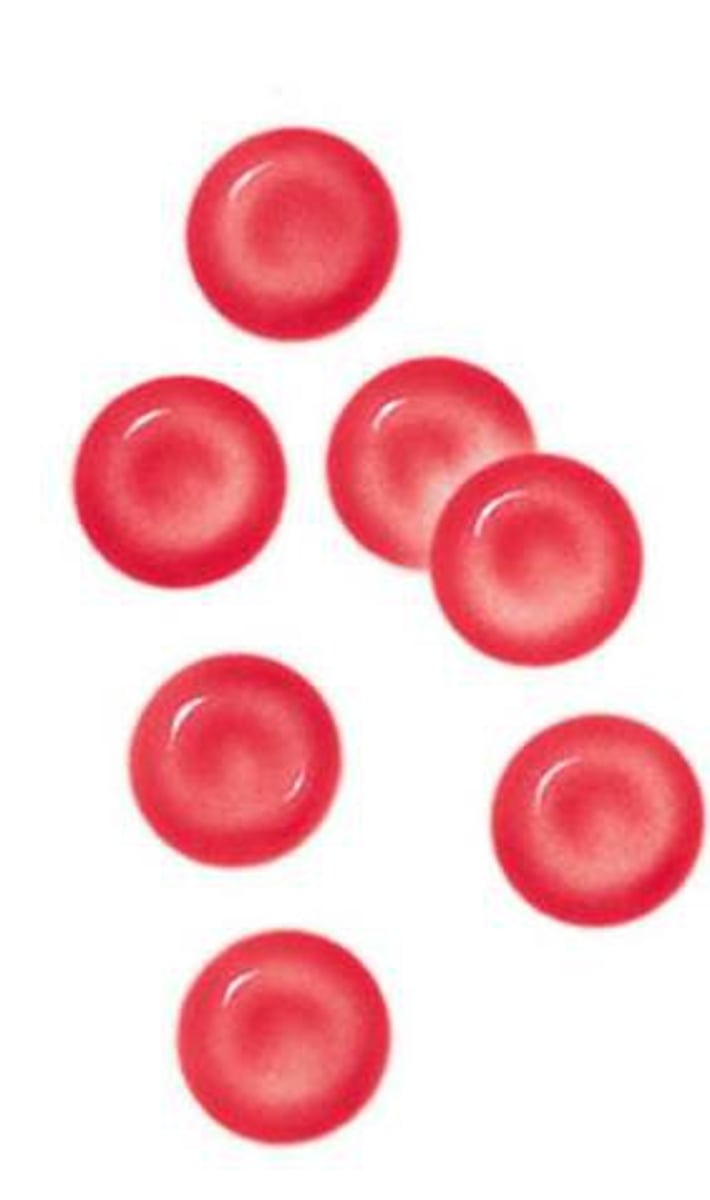
Specialisation of neutrophils
Phagocytes. Multi-lobed nucleus to squeeze through small gaps and get to site of infection. Granular cytoplasm containing many lysosomes containing enzymes to attack pathogens and hydrolyse the pathogen's molecules

Specialisation of sperm cells
Male gametes of animals. Deliver genetic into to female gamete (ovum). Have a tail or flagellum for locomotion. Contain many mitochondria to supply the energy needed to swim. The acrosome on the head of the cell contains digestive enzymes which are released to digest the protective layers around the ovum and allow the cell to fuse with the ovum. They contain a haploid nucleus in order to restore the diploid number of chromosomes at fertilisation.
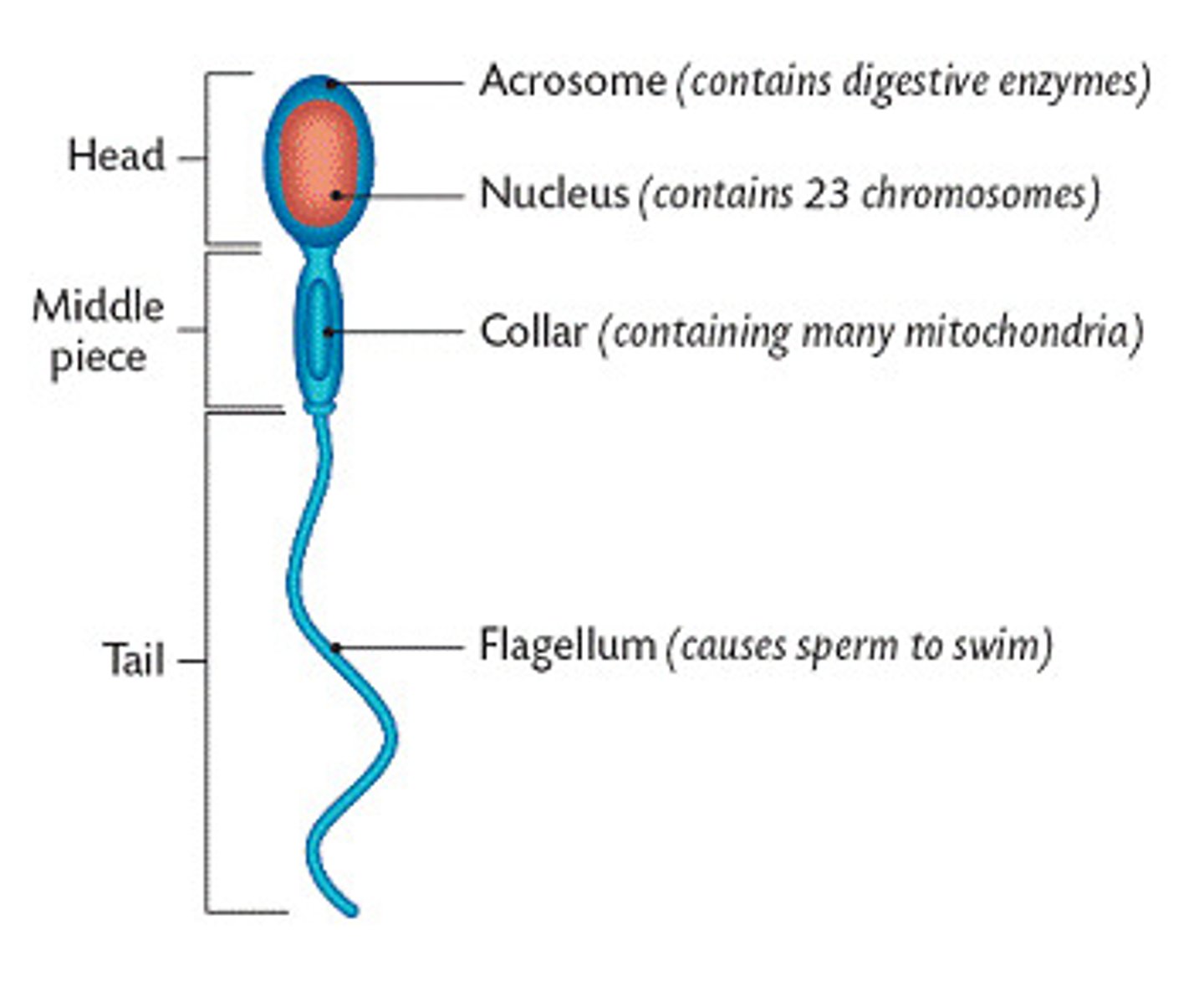
Specialisation of palisade cells
Contain chloroplasts to absorb large amounts of light for photosynthesis. Rectangular box shaped so that they can be closely packed to form a continuous layer. Long cells so more opportunity for light to hit a chloroplast. Thin cell walls increasing rate of diffusion of CO2 for photosynthesis. Larger vacuole to maintain turgor pressure. Chloroplasts can move within cytoplasm to absorb more light.

Specialisation of root hair cells
Long extensions called root hairs which increase the surface area of the cell. THis maximises the uptake of water and minerals from the soil.
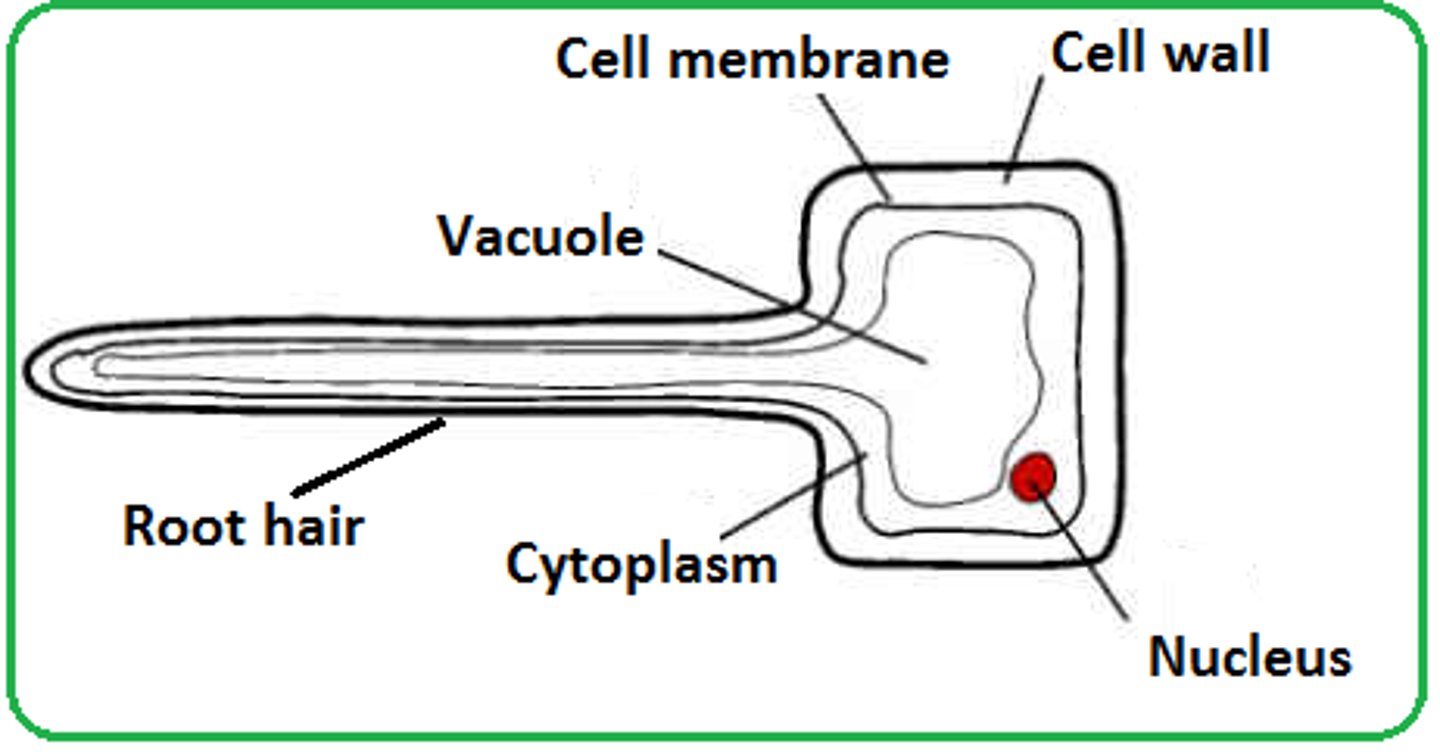
Specialisation of guard cells
Pairs on surface of leaves from small openings called stomata. The openings are necessary for CO2 to enter plants for photosynthesis. When these cells lose water and become less swollen as a result of osmotic forces they change shape and the stoma closes to prevent further water loss from the plant. The cell wall on guard cells is thicker on one side so the cell does not change shape symmetrically as its volume changes.
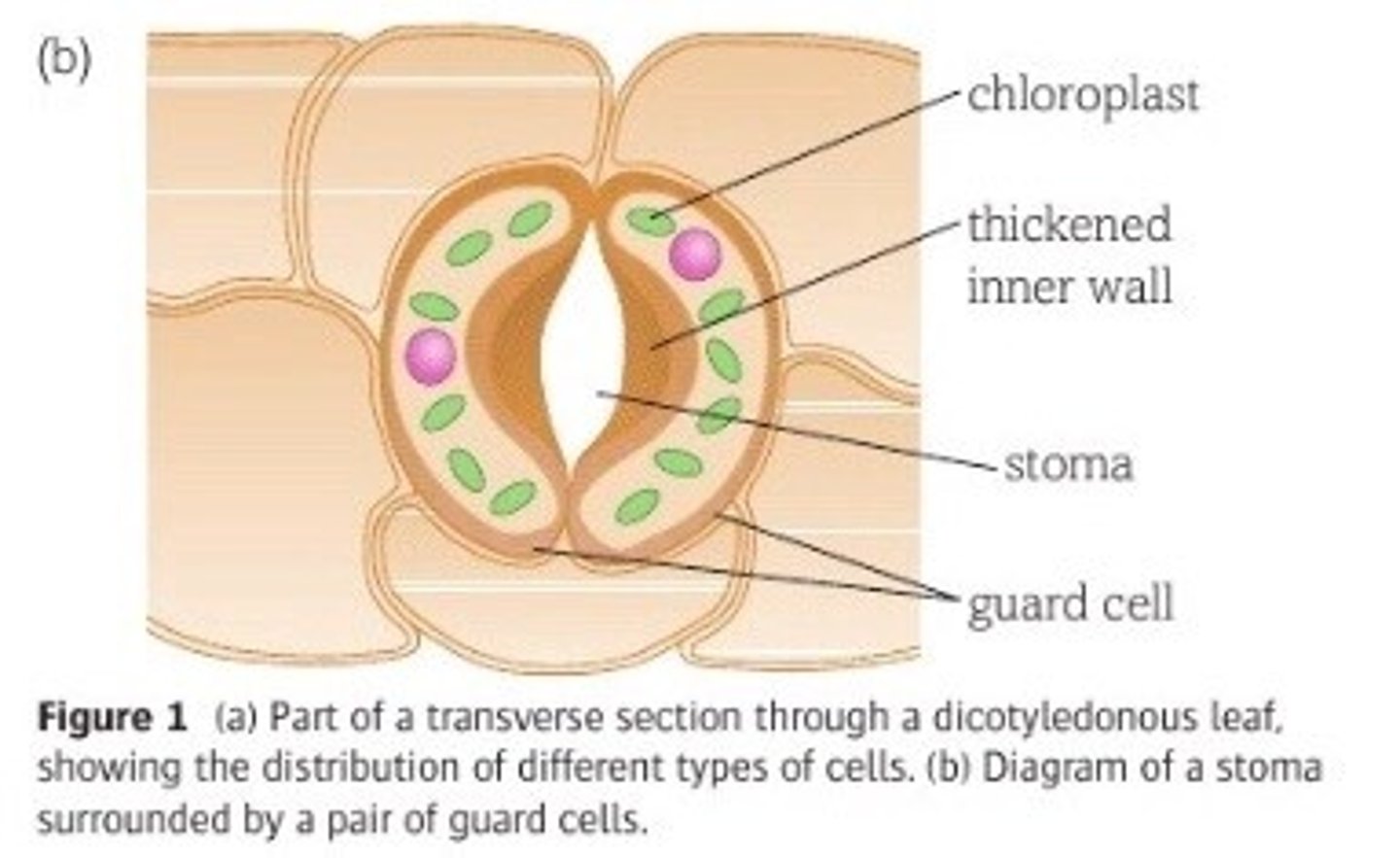
State the 4 main categories of tissues in animals
Epithelial tissue, connective tissue, muscle tissue, and nervous tissue
Specialisation of squamous epithelium
Very thin tissue due to the flat cells that make it up and because it is only one cell thick. It is present when rapid diffusion across a surface is essential. It forms the lining of the lungs and allows rapid diffusion of oxygen into the blood.
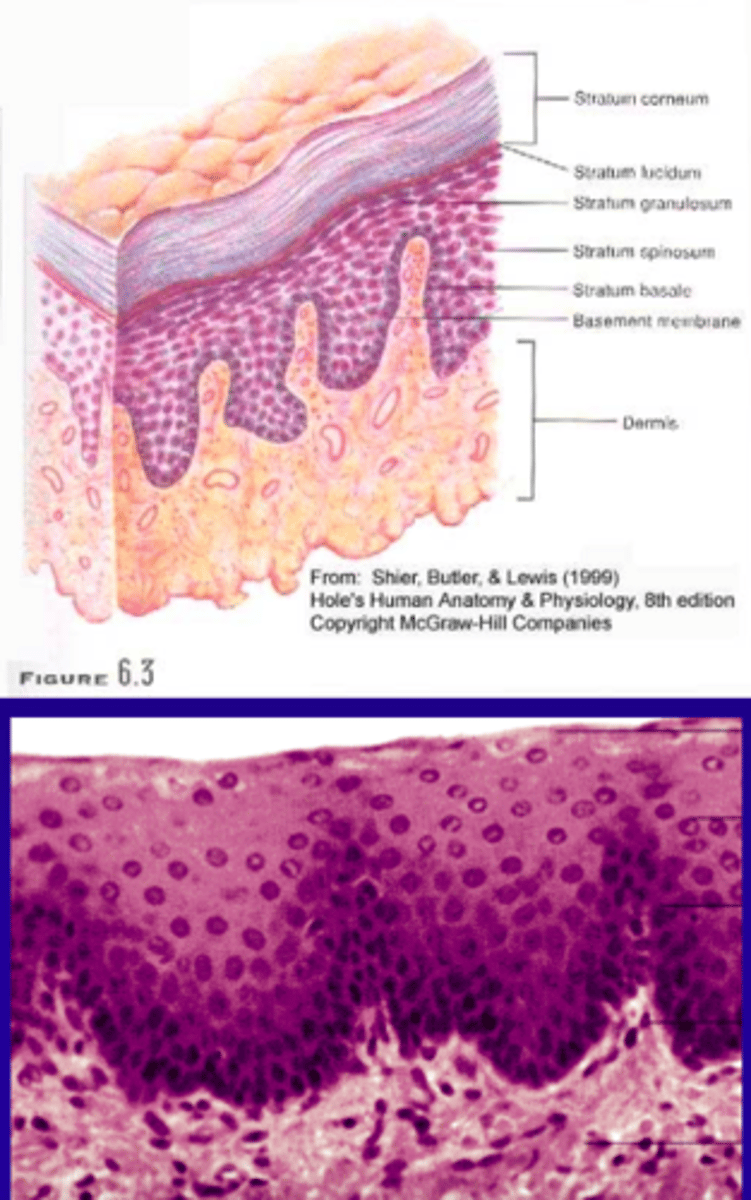
Specialisation of ciliated epithelium
Made of cells with hair like structures called cilia on one surface that move in a rhythmic manner. Lines the trachea causing mucus to be swept away from the lungs. Goblet cells are also present, releasing mucus to trap any unwanted particles present in the air. This prevents the particles, which may be bacteria, from reaching the alveoli once inside the lungs.
Specialisation of cartilage
Connective tissue found in the outer ea, nose and at the ends of and between bones. It contains fibres of the proteins elastin and collagen. Firm, flexible connective tissue composed of chondocyte cells embedded in an extracellular matrix. This tissue prevents the ends of bones from rubbing together and causing damage.
Specialisation of muscle
Can contract to move bones or perform other contractile functions. The form that move bones has long, multinucleate cells with contractile elements called myofibrils. They contain many mitochondria to supply the energy for contraction. The cells appear striped due to the arrangement of the proteins, actin and myosin, which make up the myofibrils.
Specialisation of plant epidermis
Single layer of closely packed cells covering the surface of plants. Covered in waxy, waterproof cuticle to reduce water loss. Stomata, formed by guard cells are present in this tissue. They allow CO2 in and water vapour and oxygen out.
Specialisation of xylem tissue
Vascular tissue responsible for the transport of water and minerals through plants. It is composed of vessel elements which are elongated, hollow, dead cells. The joining walls of these elements have broken down to leave continuous tubes and the side walls are thickened with cellulose and strengthened with lignin to provide structural support for plants. Also contains tracheids - very similar to vessel elements but remain separate, dead cells, connected by small holes called pits rather than combining to form true vessels.
Specialisation of phloem tissue
Vascular tissue responsible for the transport of organic nutrients, particularly sucrose, plants. Transport occurs from where the sucrose is made (either from the products of photosynthesis or from stores of carbohydrates) to where it is needed. It is composed of sieve tubes cells (or sieve tube elements) which only have cytoplasm around their edges and are joined by highly perforated sieve plates into relatively hollow columns. There are also companion cells which perform all of the cellular functions of the sieve tube cells.
State 3 examples of organ systems in animals and for each describe its function
Digestive
Nervous
Gas exchange
Endocrine
Reproductive
Circulatory/cardiovascular
Skeleto muscular
Define... stem cell, undifferentiated, totipotent, pluripotent, multipotent, embryonic stem cell, tissue/adult stem cell
Stem cells: undifferentiated cells with the potential to differentiate into a variety of the specialised cell types of the organism
Undifferentiated: an unspecialised cell originating form meiosis or mitosis
Totipotent: a stem cell that can differentiae into any type of cell and form a whole organism
Pluripotent: a stem cell that can differentiate into any type of cell, but not form a whole organism (all cell types of the idependently functioning organism - not placental cells)
Multipotent: a stem cell that can only differentiate into a range of cell types within a certain type of tissue
Embryonic stem cell: Stem cell found in embryos - can differentiate into anything!
Adult stem cells: can form cells of free living organism - after birth
Describe the characteristic abilities of stem cells
Not been through (much) differentiation. Can divide again and again producing many cells. Function is to produce more cells. (Specialised cells perform specific tasks and have entered G0 so no longer produce new cells - do not do the cell cycle)
Explain the importance of stem cells and why their activity must be carefully controlled
Source for new cells necessary for growth, development, and tissue repair. If do not divide fast enough then not efficient enough for tissue repair. If too fast then form masses which could become cancerous
State the 3 types of stem cell and give examples of where they occur in animals
Totipotent - in zygote
Pluripotent - in embryos
Multipotent - in bone marrow
State where stem cells occur in plants and state which type of potency they have
In meristematic tissues (meristems) in the cambium between phloem and xylem and at the tips of roots and shoots. The cells are pluripotent.
Outline how a cell becomes specialised
The stem cell will be cycling through the cell cycle, doing mitosis... It enters phase G0 and bedcomes committed to becoming a certain type of cell. It then goes through a series of changes to become suited for the role.
Outline production of erythrocytes and neutrophils and why it is necessary for them to be constantly produced
Produced form stem cells in the bone marrow. Nucleus ejected and haemoglobin builds up for RBC etc. Nucleus becomes lobed for neutrophil etc. RBCs have very short lifespan (120 days) due to lack of organelles and nucleus so need constant replacement. Neutrophils only live about 6 hours. Production increases during infection.
Outline how phloem and xylem are produced
Stem cells in meristem in vascular cambium, sandwiched between phloem and xylem. Cells differentiate into the specialised tissue cells as plant grows.
List 7 diseases that stem cells have the potential to treat and how they would be useful in each case
Heart disease - stem cells transplanted to replace muscle that is irreparably damaged as a result of a heart attack
Type 1 diabetes - own immune system destroys insulin producing cells, stem cells could replace them as alternative for injecting insulin for life
Parkinson's disease - symptoms of shaking and rigidity caused by the death of dopamine producing cells in the brain - drugs only delay process stem cells could potentially replace the dead cells
Alzheimer's disease - brain cells destroyed by build up f abnormal proteins - current drugs just alleviate symptoms
Macular degeneration - causes blindness in the elderly and diabetics - research is promising
Birth defects - reversing previously untreatable defects - successful in mice
Spinal injuries - stem cell implants into spinal cords of rats have recovered some movement in hind legs after paralysis
Describe how stem cells may be useful for treating burns
Stem cells used to grow skin on biodegradable meshes - quicker than traditional skin graft from other body part
Describe two ways in which stem cells may be useful in research
Can be used in drug trials to test new drugs on before animals or humans
Instrumental in study of developmental biology - how cells divide to form multicellular organisms and how it sometimes goes wrong
Describe arguments for and against use of embryonic stem cells for research and medicine
For: Extra embryos from fertility treatment destroyed anyway
Relieves suffering if can find treatments
Against: The belief that life starts at conception and therefore killing embryos is murder
Does the embryo have rights?
Who owns the genetic material used for research?
Risk of infection, rejection, cancer, false hope
Describe the role science takes in informing decision making by society, as well as the limitations of science in informing this decision making
????????????
Define the term 'induced pluripotent stem cell' and explain why they may be very useful in research and medicine
Cells isolated from patient and grown in a dish the treated with 'reprogramming' factors which change them into pluripotent stem cells which can then be stimulated to differentiate into a variety of cell types. Genetically identical to patient so no risk of rejection and none of the embryo ethical issues
Describe how plant stem cells may be useful for medicine using the example of the drug 'Paclitaxel' from the bark of yew trees
Paclitaxel is used to treat breast and lung cancer and cannot be chemically synthesised but limited supply of mature yew trees and extraction process expensive. Stem cells can be cultured and then used to produce paclitaxel in sustainable quantities and more cheaply
Describe how the use of stem cells and gene therapy may be combined to treat SCID
Severe combined immunodeficiency - patient does not produce T cells, without which B cells cannot function either. Treatment by bone marrow transplant relies on finding matching donor. Aim is to remove some of patient's own bone marrow stem cells and genetically alter them so that when replaced they produce white blood cells as they should. Some success so far although in some patients another gene was damaged causing the development of leukaemia.